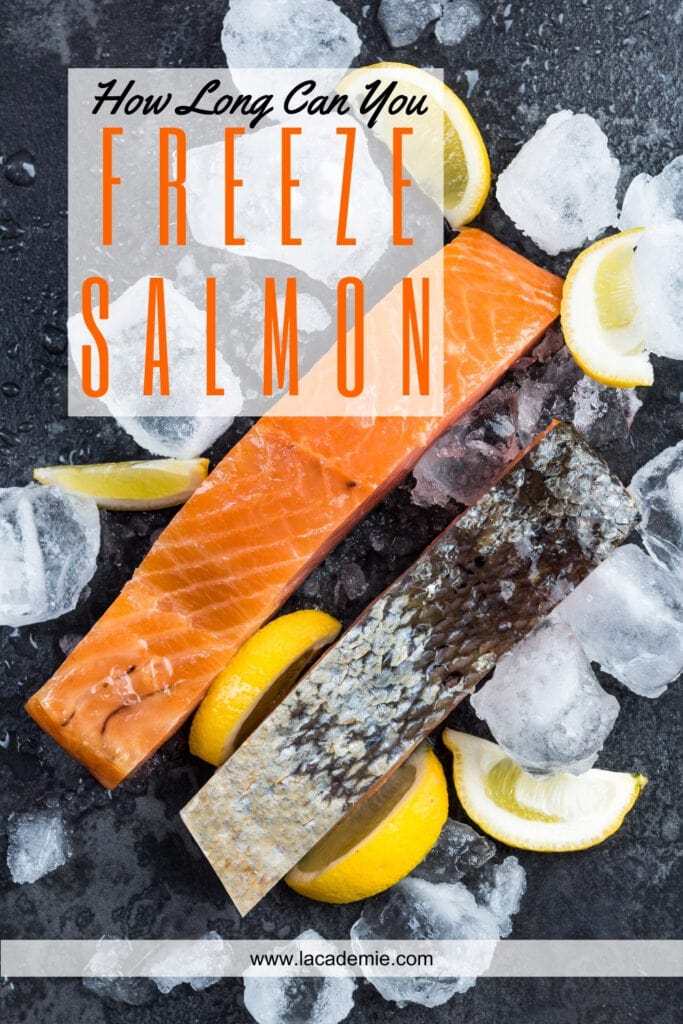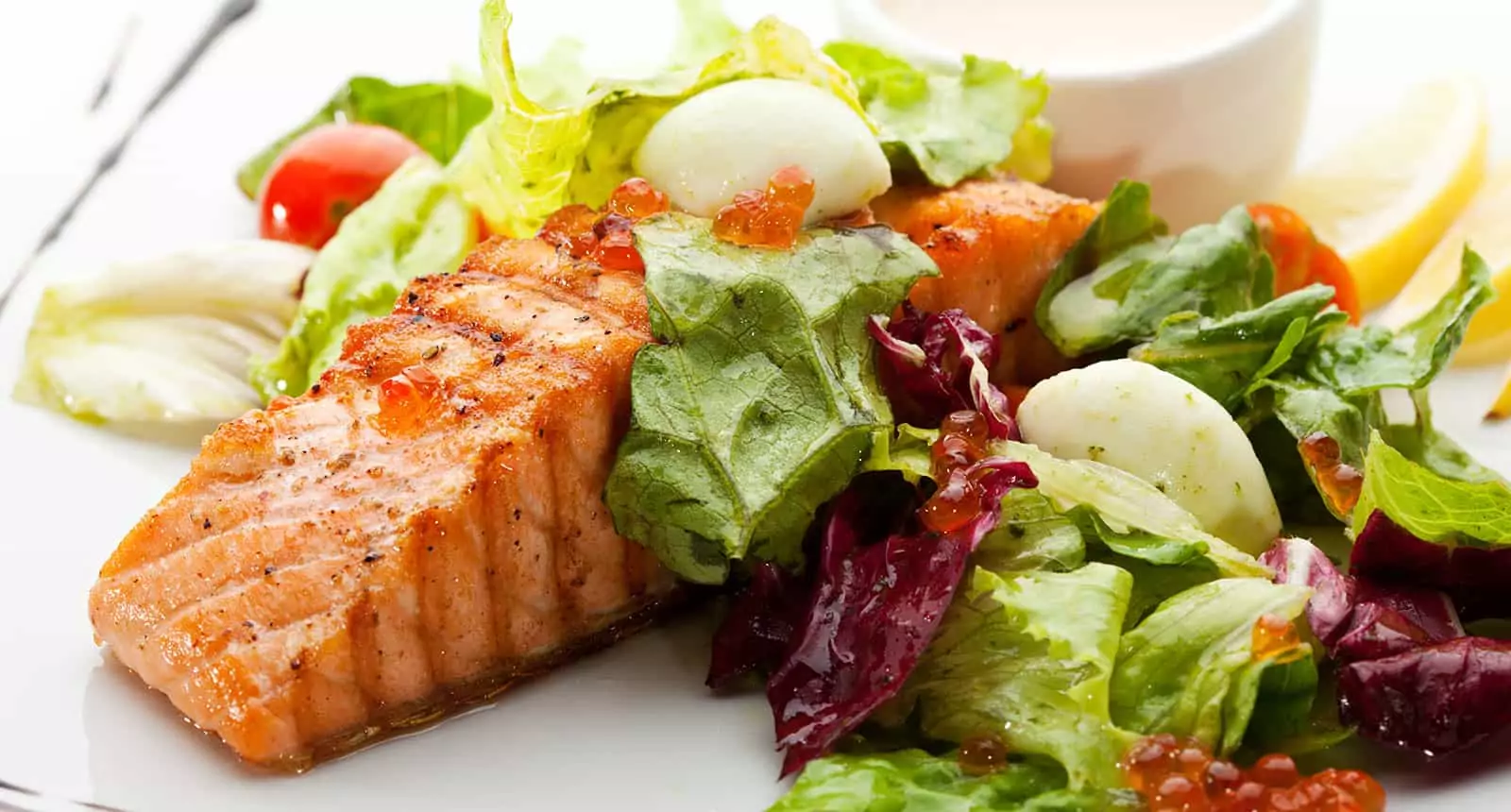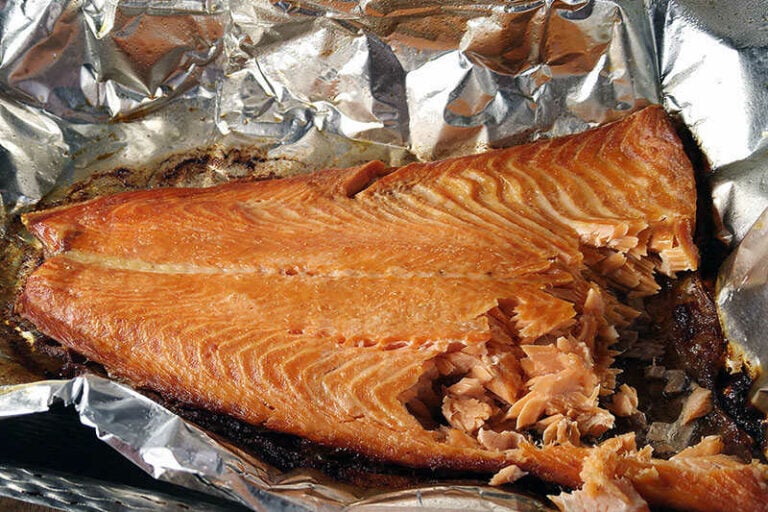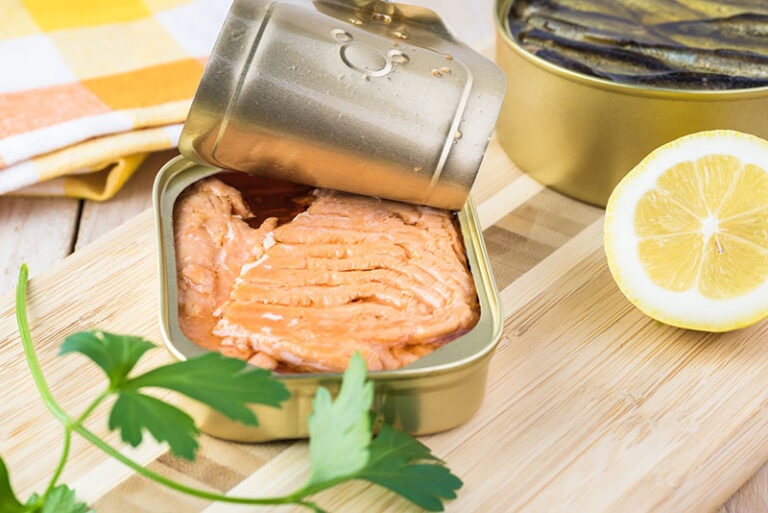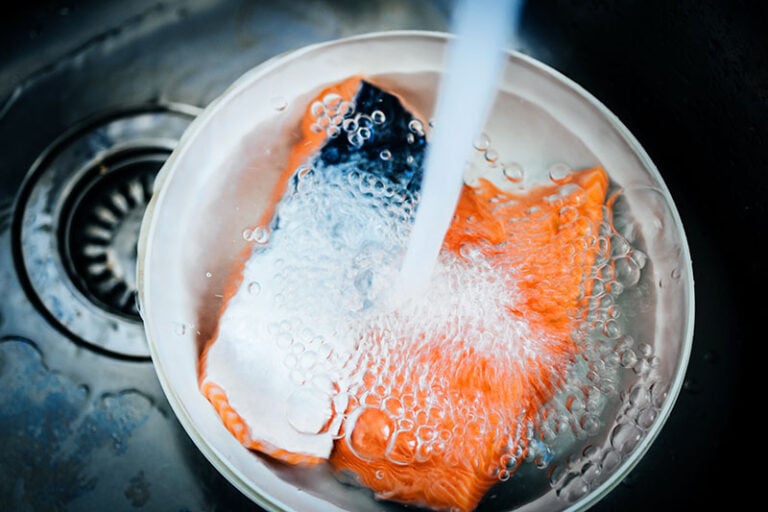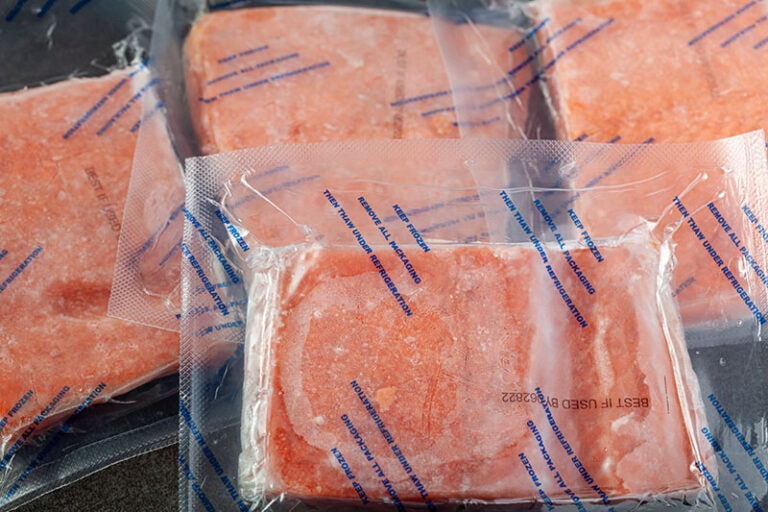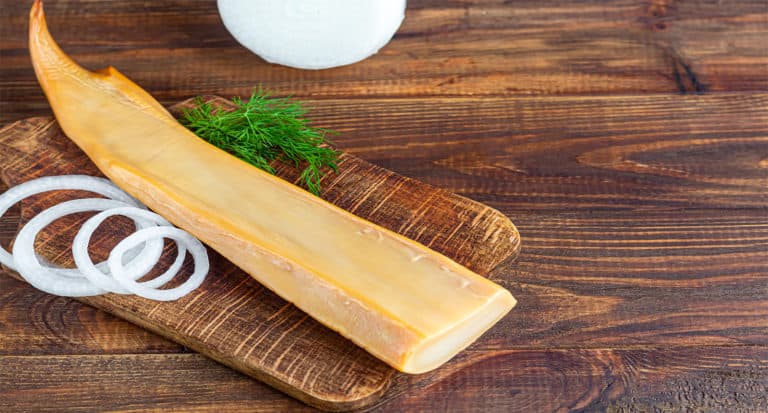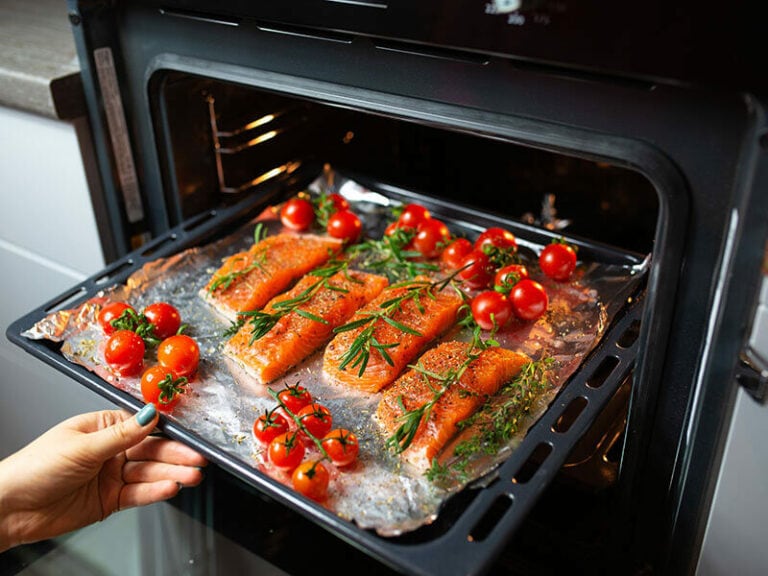If you’re wondering how long can you freeze salmon, this article is for you.
It’s not recommended to freeze salmon because freezing can decrease some of the salmon’s exquisite flavor. However, if you live far from a supermarket, you may want to buy more and store salmon in your freezer.
Fortunately, salmon can be kept frozen for up to 3 months or longer. However, the shelf life depends on the type of salmon (fresh, canned, and smoked salmon) and storage conditions.
In this article, I will teach you all you need to know about salmon, so let’s begin.
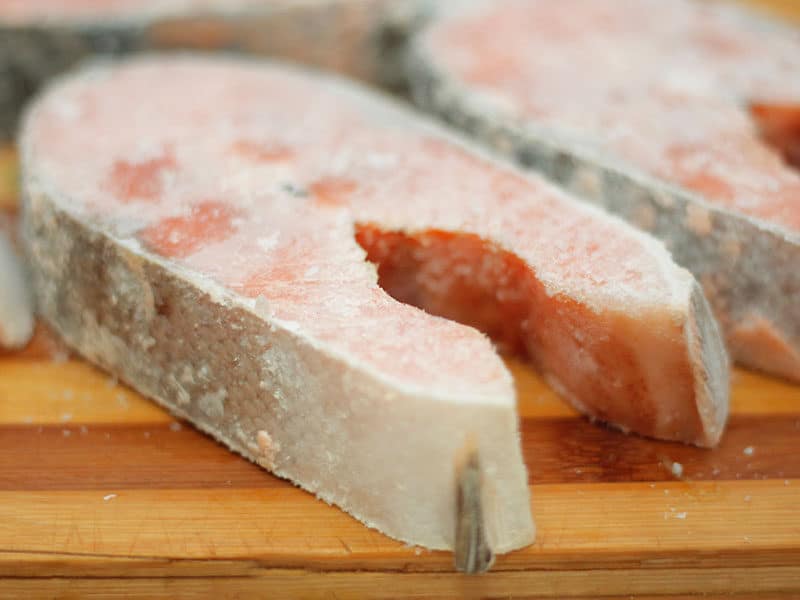
How Long Can You Freeze Salmon?
Rich in omega-3 fatty acids, minerals, and protein, salmon is both delicious and healthy. It’s excellent for your brain functions and overall health and is even recommended for expecting mothers.
As I already said, how long you can freeze salmon depends on the type of salmon. Smoked, canned, and raw salmon have different shelf life. That said, let’s learn more about each type.
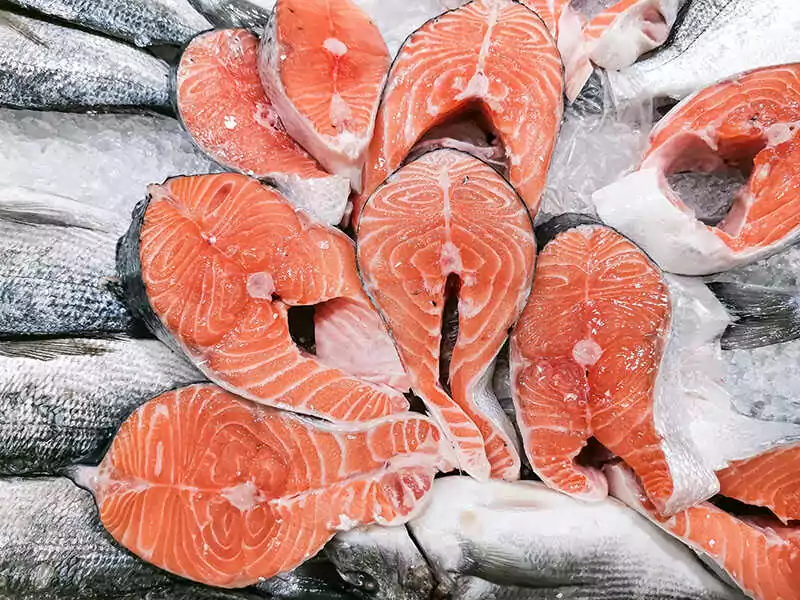
Smoked Salmon
You may wonder if it’s necessary to freeze smoked salmon since this variety has an already long shelf life. Well, in fact, freezing can maximize the storage life of smoked salmon.
You just need to tightly wrap it in heavy-duty aluminum foil or plastic wrap. Unopened smoked salmon lasts for 2 months in the freezer, while opened smoked salmon lasts for 1 month in the freezer, according to the FDA.
Canned Salmon
Canned salmon that’s constantly refrigerated is good for up to 3 or 4 days. However, you can maximize the service life of delicious canned salmon by 3 months by storing it in the freezer at 0°F.
Raw Salmon
When frozen, raw salmon will stay safe for consumption for 2-3 months. You can freeze salmon for up to 6 months. However, the quality of the meat starts degrading after 3 months.
First, rinse the raw salmon, pat it dry, fold it in an air-tight container, and freeze it. Write down the date of freezing and consume it before 6 months.
Improper cooking can ruin the flavor and texture of frozen raw salmon. Therefore, proceed with caution and give the salmon enough time to defrost to protect its nutrients and flavor.
Can Salmon Be Refrozen?
Avoid refreezing raw salmon unless it was defrosted in the fridge and never reached room temperature. If you refreeze a fish that has reached room temperature, there’s a big risk of foodborne illness. Cook the fish immediately and plan your meals better in the future.
How To Freeze Salmon Properly?
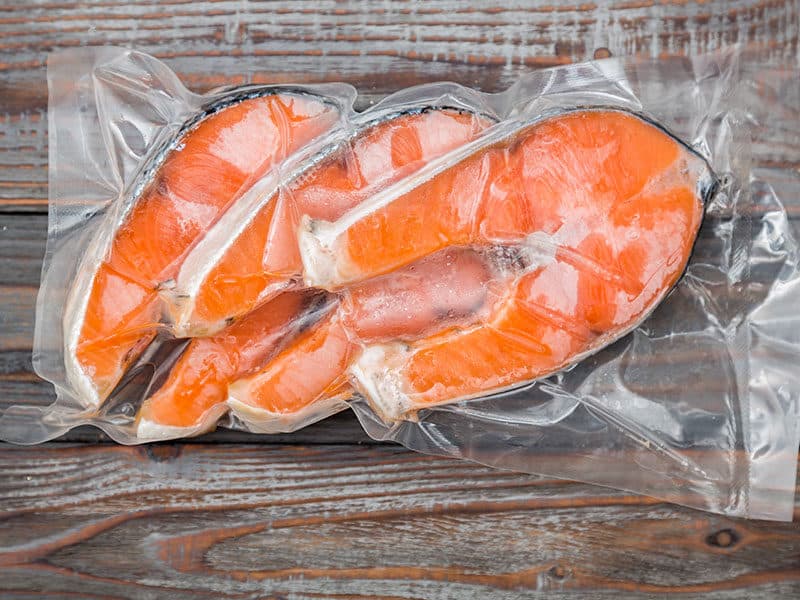
One of the biggest benefits of salmon is the quick thawing process. Therefore, if you feel hungry in the middle of the night and want to have a healthy meal, then salmon is a perfect choice. Here’s a short guide on how to freeze salmon properly.
Instructions:
- Purchase fresh salmon.
- Remove the skin (optional step).
- Freeze the salmon in plastic or freezer bags.
Tips And Reminders:
- Consume the salmon within 6 months.
- Slice salmon with a professional boning knife in serving sizes according to your needs.
- Avoid sandwich bags. Use freezer bags instead. They’re thicker and better for freezing meat.
- Determine the amount of fish in a bag according to the amount you consume in a meal.
- If ready to defrost, move the amount required to the fridge and leave overnight.
- Tightly roll the freezer bag with the fish inside.
After defrosting, dry the fish as gently as possible. You can leave a defrosted salmon in the fridge for two days. Following these steps can help you preserve the quality of your fish for longer.
A More Specific Method of Freezing Salmon:
There’s a better way to freeze salmon than the common one I described above. It’s known as ice glazing and will preserve the quality of your fish in the freezer.
First and foremost, make space in the freezer for a baking tray. Place the fish on a tray, unwrapped and uncovered, put it in the freezer, and wait for the fish to freeze.
Check if the flesh is no longer flexible. Then, remove the salmon from the freezer, dip them in cold water and return it to the tray in the freezer. Wait for it to freeze again.
Submerge it in cold water again and put it back in the freezer. Repeat this process a few times until the fish has a complete, substantial layer of ice around it.
Once you’re done, seal the fish in freezer bags. Press out the air. Or fold the fish tightly in multiple layers of plastic wrap. And don’t forget to write down the date.
Check out this video to know:
Can Salmon Go Bad In The Freezer?
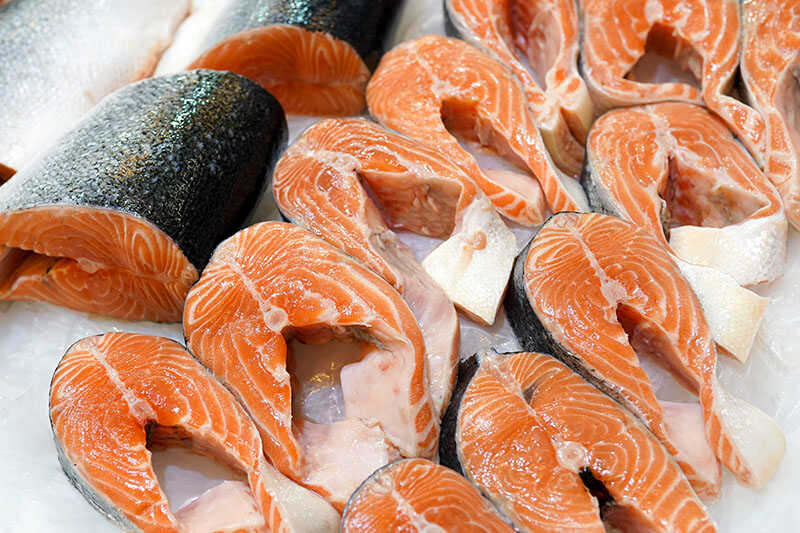
Salmon is one of the healthiest and most delicious meats on the market. However, when you eat salmon that has gone bad, it not only tastes gross, but you can also get food poisoning.
If you want to avoid illness due to eating spoiled salmon, pay close attention to several symptoms indicating your salmon has gone bad. These signs below can help you a bit at the moment.
Visual Signs
- Uncommon dark spots.
- White, sticky, or stringy-looking gills.
- Whitish, sunken, or filmy eyes instead of white eyes with dark purple pupil.
- Discoloration, mold, odd growths, and slimy residue.
- Gray and dulled tint.
Scent Signs
- Strong fishy smell.
- It doesn’t have a slightly salty and mild sea smell.
Texture Signs
- Don’t consume fish with fragile textures.
- Apply pressure on the meat lightly. If it bounces back, it’s safe to consume. However, if the meat stays pressed, toss it out.
- Don’t consume soggy frozen fish.
Usually, your senses can help you determine if a fish is spoiled or bad. Avoid bad salmon to protect your health and taste buds. Remember that only the best quality fish tastes good. It’s also good to remember that although freezing salmon is okay, it’s always better to eat fresh salmon.
How To Thaw Frozen Salmon Safely?
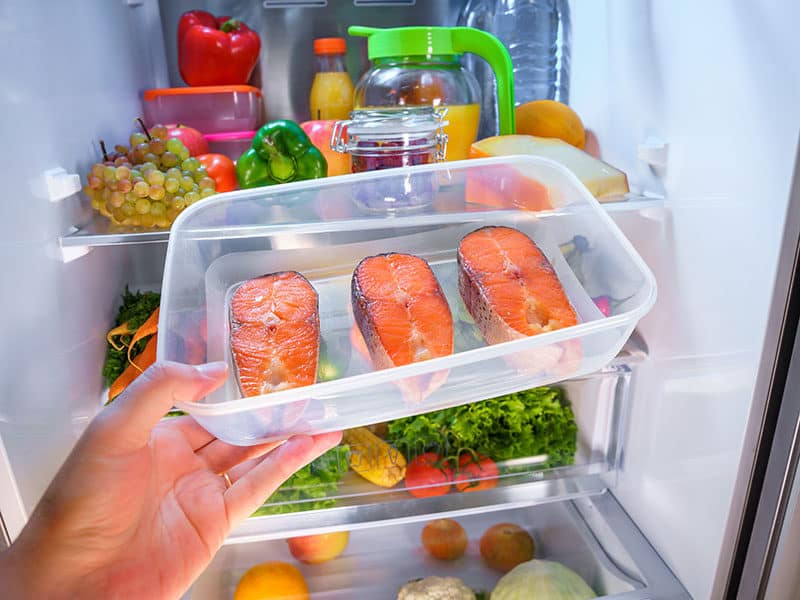
Thawing salmon properly is very important, as it can also affect the required time to cook salmon and the resulting flavors/texture. So, the time limit to cook salmon at 400F may alter drastically if the salmon is still frozen. Here are 3 thawing methods you can try.
Thaw In The Fridge (The Safest Method)
Leave your frozen salmon to thaw in the fridge for about 12 hours or more. It’s best to plan your cooking and move the salmon from the freezer to the fridge.
If your salmon weighs over 1 pound, remove it from the freezer about 24 hours before cooking the dish. Remove it from the package and fold it in a plastic wrap that holds the whole piece.
Keep your frozen salmon away from sweet food. Otherwise, it can absorb the fishy odor. The following method is also easy and perfect for people in a hurry.
Thaw In Cold Water
If you have only 1 hour to prepare your meal and you’re in a hurry, you can thaw the frozen fish in cold tap water. First and foremost, remove the original packaging.
Then, pack it again in a Ziploc bag and seal it closed. Put the bag on a high-quality defrosting tray so that the fish defrosts properly and evenly. Finally, place the bowl in the sink and add cold water.
Don’t use hot water because it can promote the risk of bacterial growth. Replace the water every 10-15 minutes until the salmon fully defrosts, and cook it immediately.
Thaw In The Microwave
Although this method provides the fastest results, it’s also the least recommended option. I’m not a fan of this technique because microwave heating can transfer dangerous and uneven thawing of the salmon, and there’s a bigger risk of bacterial growth.
However, if you’re in a hurry and don’t have time to wait for the salmon to defrost naturally or defrost it under cold water, opt for the microwave technique.
First, take off the original package. Then, put it on a paper towel and transfer it to the microwave. Make sure that the thinnest parts remain in the middle of the container, and cover it with another paper towel. Set the timer for 5 minutes for every 1 pound of salmon.
Let the machine run for 2 and a half minutes. Then, flip the salmon to the other side. Keep defrosting for 1 minute. You can either fry, broil, cook, or grill it.
Check out this video to know:
How Long Can You Store Raw Salmon?
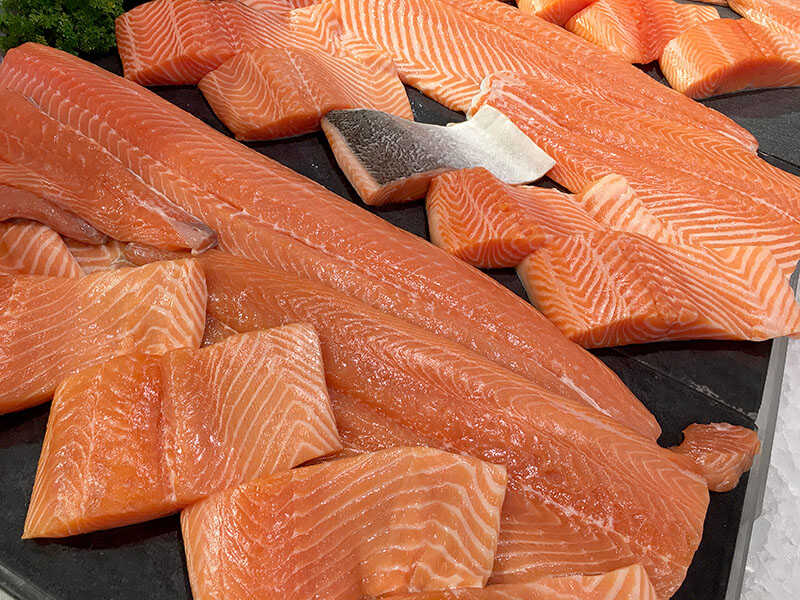
The answer depends on different factors, including storage conditions. It’s recommended to keep salmon in the fridge at all times. After you buy salmon, it can stay in the fridge for 1-2 days.
The sell-by date on the original package can expire during the storage period. However, the product will stay safe to consume after the sell-by date if it has been properly stored or frozen.
Sealed raw salmon can be preserved in the original package when refrigerating. If you want to maximize the shelf life of this type of fish, don’t open the original package until ready to cook.
This is because bacteria develop quickly at temperatures between 40°F-140°F. Thus, raw salmon should be thrown out if left out for over two hours at room temperature to prevent disease.
The best way to extend the shelf life of raw fish, including salmon, is to freeze it. Put it in the freezer before the number of times shown for refrigerator storage has elapsed. Wrap the fish by removing the package or overwrapping it with a heavy-duty air-tight aluminum foil or plastic wrap.
You can also use freezer paper or put the package inside a freezer bag to prevent freezer burn. When stored the right way, raw salmon lasts for 2-3 months in the freezer but will stay safe for longer.
After being frozen and defrosted, salmon can be kept in the fridge for 1-2 days before preparing it. A fish that has been defrosted in cold water or microwave should be cooked immediately.
Can You Eat Salmon That’s Been Frozen For A Year?
When properly preserved, frozen salmon will stay completely safe for consumption for about 9 months in the freezer. However, it will usually stay safe to consume after that.
Salmon that has been stored frozen at 0°F at all times will stay good indefinitely, as long as the package isn’t damaged. Freezing salmon doesn’t decrease its nutritional value.
Freezer burn can dry the meat in places, but it’s still good to consume. If you consume bad fish, you can either get scombroid poisoning or ciguatera poisoning, so stay cautious.
Freeze It Till You Eat It
When purchasing wild BC salmon, look for reddish grills, moist skin, clear and shiny eyes, tightly-adhered and shiny scales, a sweet and clean smell, and a firm texture that passes the pressure test.
This test includes pressing the meat with a finger. If the meat bounces back, it’s good to consume. Avoid purchasing wild BC salmon that has spots or bruises, has a strong fishy smell, or dried-out parts.
When shopping for frozen wild BC salmon, ensure that the vacuum packing or plastic covering is intact. Also, if the fish is coated in layers of ice, ensure that the coating covers all parts. Lastly, check for freezer burn. How long you can freeze salmon depends on the type of salmon, storage, and storage place.
For instance, if vacuum sealed, salmon will stay good for 3-4 months in a home freezer and 6-12 months in a deep freeze. After that, the nutritional value and flavor of your salmon will start to diminish.
Was this helpful? Have you learned something new about salmon? Do you have any cooking tips? Don’t hesitate to leave a comment below and share this valuable information with your friends.
Nutrition Facts
1 servings per container
- Amount Per ServingCalories99
- % Daily Value *
- Total Fat
3.7g
5%
- Saturated Fat 0.8g 0%
- Cholesterol 20mg 7%
- Sodium 1700mg 71%
- Potassium 149mg 5%
- Protein 15.5g 30%
- Calcium 9%
- Iron 1%
* The % Daily Value tells you how much a nutrient in a serving of food contributes to a daily diet. 2,000 calories a day is used for general nutrition advice.
